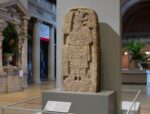 Two 8th century Maya stele have been installed in the Great Hall of the Metropolitan Museum of New York. On loan from the Republic of Guatemala, the relief carvings of two Maya rulers, one male, one female, replace statues of the 12th-dynasty pharaoh Amenemhat II and the goddess Athena that have been in Great Hall for years.
Two 8th century Maya stele have been installed in the Great Hall of the Metropolitan Museum of New York. On loan from the Republic of Guatemala, the relief carvings of two Maya rulers, one male, one female, replace statues of the 12th-dynasty pharaoh Amenemhat II and the goddess Athena that have been in Great Hall for years.
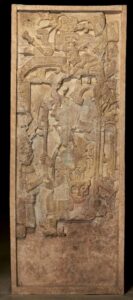 Stela 5 from Piedras Negras, a Classic Maya urban center on the border with what is now Chiapas, Mexico, that was modest in population but so rich in engravings documenting the chronology and accomplishments of its rulers that it played a key role in the deciphering of Maya script in the late 1950s. The stela is a life-sized representation of King K’inich Yo’nal Ahk II (ca. 664-729 A.D.) who is seated on a throne while receiving a nobleman. The throne is lined with a jaguar skin, its head staring unseeing at the viewer. Above the king is an anthropomorphic mountain with an open jaw from which deities emerge. Its glyphs include a date: November 2nd, 716.
Stela 5 from Piedras Negras, a Classic Maya urban center on the border with what is now Chiapas, Mexico, that was modest in population but so rich in engravings documenting the chronology and accomplishments of its rulers that it played a key role in the deciphering of Maya script in the late 1950s. The stela is a life-sized representation of King K’inich Yo’nal Ahk II (ca. 664-729 A.D.) who is seated on a throne while receiving a nobleman. The throne is lined with a jaguar skin, its head staring unseeing at the viewer. Above the king is an anthropomorphic mountain with an open jaw from which deities emerge. Its glyphs include a date: November 2nd, 716.
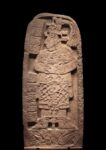 The other stela in the Great Hall is number 24 from the El Naranjo site in Petén. It depicts queen regent Ix Wak Jalam Chan (ca. 670s-741 A.D.), who like another great Maya queen, Lady Snake Lord, held her own power rather than acting as mere queen consort.
The other stela in the Great Hall is number 24 from the El Naranjo site in Petén. It depicts queen regent Ix Wak Jalam Chan (ca. 670s-741 A.D.), who like another great Maya queen, Lady Snake Lord, held her own power rather than acting as mere queen consort.
One of the most powerful women known by name from the ancient Americas, Ix Wak Jalam Chan (Lady Six Sky) arrived in the city of Sa’aal, now near the border between Belize and Guatemala, in 682. The daughter of a powerful ruler in a centuries-old dynasty, she married into the local ruling family, securing a critical political alliance. Ruling as regent in place of her infant son, the queen led military campaigns to conquer neighboring cities in the late seventh and early eighth centuries. This monument records her triumph: she appears with a captive underfoot and a bowl of ritual implements in her arms.
The hieroglyphic caption also indicates that she is impersonating a goddess. The artists portrays Lady Six Sky with spiritually charged regalia, including a woven skirt with jade beads, an elaborate belt assemblage featuring a supernatural watery being and Spondylus shell, and a feathered headdress, emphasizing the fluidity of identity between human leaders and gods. With this portrait, she underscored both her strategic prowess in warfare and her divine right to rule.
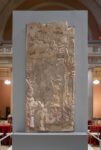 The government of Guatemala sharing two other important pieces from Piedras Negras with the Met, but not for display. As part of the loan agreement, the Met’s conservators will turn their keen eyes on one of Piedras Negras’ exceptional relief panels and a Throne 1, an elaborately carved stone throne that is widely considered a masterpiece of Maya sculpture. The spectacular throne was commissioned by the last king of Piedras Negras around 800 A.D. and it is covered with inscriptions detailing
The government of Guatemala sharing two other important pieces from Piedras Negras with the Met, but not for display. As part of the loan agreement, the Met’s conservators will turn their keen eyes on one of Piedras Negras’ exceptional relief panels and a Throne 1, an elaborately carved stone throne that is widely considered a masterpiece of Maya sculpture. The spectacular throne was commissioned by the last king of Piedras Negras around 800 A.D. and it is covered with inscriptions detailing 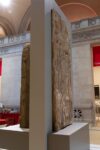 the dynastic succession of the previous kings of Piedras Negras.
the dynastic succession of the previous kings of Piedras Negras.
The stele will be standing watch in Great Hall until August 2024, representing the art of the ancient Americas while The Michael C. Rockefeller Wing, the Met’s gallery dedicated to African Art, Ancient American art and Oceanic art, is closed for an expansive redesign and reconceptualization.